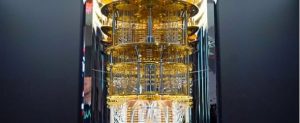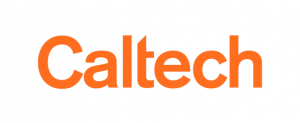
Quantum News Briefs October 13:
The $1.2 billion case for quantum by Center For Data Innovation
 Derek Robertson discussed in October 12 Politico the report published by the Center For Data Innovation think tank on October 10 that urges the government to reauthorize and fund the 2018 Quantum Initiative Act, warning the U.S. risks losing ground in its global leadership in the field without it. That bill directed more than $1.2 billion to strengthen quantum research, and launched the National Quantum Coordination Office and National Quantum Initiative Advisory Committee to coordinate and assess the government’s efforts. Quantum News Briefs summarizes Robertson’s article.
Derek Robertson discussed in October 12 Politico the report published by the Center For Data Innovation think tank on October 10 that urges the government to reauthorize and fund the 2018 Quantum Initiative Act, warning the U.S. risks losing ground in its global leadership in the field without it. That bill directed more than $1.2 billion to strengthen quantum research, and launched the National Quantum Coordination Office and National Quantum Initiative Advisory Committee to coordinate and assess the government’s efforts. Quantum News Briefs summarizes Robertson’s article.
Omaar’s report is also a helpfully comprehensive guide to where America is on quantum policy and how we got here. By 2018, when former President Trump signed the NQIA into law, scientific and political developments had turned a research curio into something for which the federal government was willing to authorize $1.2 billion in taxpayer money.
The report makes 10 explicit recommendations for Congress if it reauthorizes NQIA, including appropriating at least $525 million annually for it, funding quantum “moonshot” collaborations with allied nations, and boosting education to develop a quantum workforce.
Hodan Omaar, the author of the center’s report and her peers, are concerned that the political will to fund quantum has waned since then, and they’re not alone. A Republican staffer for the House Science, Space and Technology Committee Research and Technology Subcommittee said during a recent webinar that although the funding authorized via last year’s CHIPS and Science Act will continue to power quantum R&D, she doubts any legislation will mandate spending. (Like the rest of the research priorities in last year’s bill, quantum still has not been funded to the authorized level.
Omaar says she’s bullish on quantum’s commercial applications despite the very early stage of its development — and furthermore, that the U.S. needs to give them a boost, writing in her report that “U.S. policy is not sufficiently focused on supporting nearterm quantum applications” contra countries like the U.K. and Canada. Click here to read the Politico article in-entirety.
 A group of researchers led by Caltech is among the first to demonstrate a type of quantum eraser. The physicists show that they can pinpoint and correct for mistakes in quantum computing systems known as “erasure” errors. Quantum News Briefs summarizes the October 12 Phys.org article discussing this research.
A group of researchers led by Caltech is among the first to demonstrate a type of quantum eraser. The physicists show that they can pinpoint and correct for mistakes in quantum computing systems known as “erasure” errors. Quantum News Briefs summarizes the October 12 Phys.org article discussing this research.
“It’s normally very hard to detect errors in quantum computers, because just the act of looking for errors causes more to occur,” says Adam Shaw, co-lead author of the new study and a graduate student in the laboratory of Manuel Endres, a professor of physics at Caltech. “But we show that with some careful control, we can precisely locate and erase certain errors without consequence, which is where the name erasure comes from.”
Specifically, they manipulated individual alkaline-earth neutral atoms confined inside “tweezers” made of laser light. The atoms were excited to high-energy states—or “Rydberg” states—in which neighboring atoms start interacting.”The atoms in our quantum system talk to each other and generate entanglement,” explains Pascal Scholl, the other co-lead author of the study and a former postdoctoral scholar at Caltech now working in France at PASQAL.
Entanglement is what allows quantum computers to outperform classical computers. “However, nature doesn’t like to remain in these quantum entangled states,” Scholl explains. “Eventually, an error happens, which breaks the entire quantum state.”
The new error-catching system is designed in such a way that erroneous atoms fluoresce, or light up, when hit with a laser. “We have images of the glowing atoms that tell us where the errors are, so we can either leave them out of the final statistics or apply additional laser pulses to actively correct them,” Scholl says
By removing and locating errors in their Rydberg atom system, the Caltech team says that they can improve the overall rate of entanglement, or fidelity. In the new study, the team reports that only one in 1,000 pairs of atoms failed to become entangled. That’s a factor-of-10 improvement over what was achieved previously and is the highest-ever observed entanglement rate in this type of system.
Ultimately, these results bode well for quantum computing platforms that use Rydberg neutral atom arrays. Click here to read the Phys.org article in-entirety.
Vector Atomic delivers quantum navigation sensor to Defense Innovation Unit
 Vector Atomic, a California-based startup, worked with Honeywell Aerospace to produce a cutting-edge navigation sensor that uses an atomic clock to take precise measurements without relying on GPS. Quantum News Briefs summarizes the October 10 Space News article.
Vector Atomic, a California-based startup, worked with Honeywell Aerospace to produce a cutting-edge navigation sensor that uses an atomic clock to take precise measurements without relying on GPS. Quantum News Briefs summarizes the October 10 Space News article.
The atomic sensor, funded by the Pentagon’s Defense Innovation Unit, was delivered in August and is awaiting a ride to space, Vector Atomic’s CEO Jamil Abo-Shaeer, told SpaceNews.
Abo-Shaeer, a former project manager at the Defense Advanced Research Projects Agency, co-founded Vector Atomic in 2018 with the goal of fielding and commercializing atomic instruments.
Quantum sensors that use atomic clocks improve accuracy and don’t drift over time like conventional systems, which makes them desirable for military applications, said Abo-Shaeer.
“They come calibrated out of the box and they stay calibrated,” he said. “The atomic systems will drift as well but you can navigate longer. They’re not doing anything fundamentally different from current technology. They’re just potentially doing it better.”
When the atomic sensor reaches orbit, it will operate autonomously. “It turns itself on, takes measurements, and pushes data back down to the ground,” said Abo-Shaeer. Click here to read the Space News article in-entirety.
Quantum internet system using QuTech’s spin-off Q*Bird projected to be a game-changer at the Rotterdam Port

The Port of Rotterdam stakeholders will be able to participate and benefit from an untappable, multi-user quantum network for their critical communication systems using QuTech’s spin-off Q*Bird. Quantum News Briefs summarizes the news release.
This system is the first to deploy a new type secure quantum network that can connect multiple users via a center hub in a cost-effective and scalable manner. This will ensure an untappable internet connection between many users, spread out throughout the harbour area.
The Port of Rotterdam represents a significant portion of the Dutch economy, handles almost 15 million shipping containers yearly and is therefore one of the largest ports in the world. Securing its communication systems will improve the safety of tens of thousands of sea ships yearly and for a significant part the economical traffic that comes after.
Previously a team of scientists and engineers at QuTech—a collaboration between the Delft University of Technology and TNO—has demonstrated an alternative, untappable method for sending encrypted information. The technology has such commercial potential that they have decided to spin-off out of QuTech under the name of Q*Bird. “Our technology is based on a special implementation of quantum key distribution (QKD) that uses a central hub to connect users that want to exchange secure communications,” explains Q*Bird’s co-founder and director Remon Berrevoets. “That means that it is possible to implement a quantum network in a cost-effective way, scalable to many end-users, and using mostly off-the-shelf equipment.”
As a first step, the central hub of the system will be situated at Port of Rotterdam Authority and will connect users at Portbase, and two or three other maritime logistic companies that are based in the port of Rotterdam. The multi-user capabilities of the central hub allow for later additions of i.e. barges and pilot organization to the network. In due course, other end-users can be connected to the system too, for example: third party customers, suppliers, and emergency services.
Click to read in detail on QuTech site
Sandra K. Helsel, Ph.D. has been researching and reporting on frontier technologies since 1990. She has her Ph.D. from the University of Arizona.
- SEO Powered Content & PR Distribution. Get Amplified Today.
- PlatoData.Network Vertical Generative Ai. Empower Yourself. Access Here.
- PlatoAiStream. Web3 Intelligence. Knowledge Amplified. Access Here.
- PlatoESG. Carbon, CleanTech, Energy, Environment, Solar, Waste Management. Access Here.
- PlatoHealth. Biotech and Clinical Trials Intelligence. Access Here.
- Source: https://www.insidequantumtechnology.com/news-archive/quantum-news-briefs-october-13-the-1-2-billion-case-for-quantum-a-new-way-to-erase-quantum-computer-errors/
- :has
- :is
- :not
- :where
- $UP
- 000
- 1
- 10
- 12
- 13
- 15%
- 2018
- 2023
- a
- Able
- accuracy
- achieved
- Act
- actively
- Adam
- Additional
- additions
- advanced
- advisory
- Aerospace
- After
- agency
- allow
- allows
- almost
- alone
- also
- alternative
- Although
- america
- among
- an
- and
- Annually
- any
- anything
- applications
- Apply
- ARE
- AREA
- arizona
- article
- AS
- assess
- At
- atom
- AUGUST
- author
- authority
- authorize
- authorized
- autonomously
- awaiting
- back
- based
- BE
- because
- become
- been
- benefit
- Better
- between
- Bill
- Billion
- boost
- boosting
- Box
- breaks
- Bullish
- but
- by
- CAN
- Canada
- capabilities
- careful
- case
- causes
- Center
- central
- ceo
- certain
- Chips
- Clock
- Clocks
- Co-founder
- collaboration
- collaborations
- come
- comes
- commercial
- committee
- Communication
- communication systems
- Communications
- Companies
- comprehensive
- computer
- computers
- computing
- concerned
- Congress
- Connect
- connected
- connection
- Containers
- continue
- control
- conventional
- coordinate
- coordination
- correct
- cost-effective
- countries
- Course
- critical
- curio
- Current
- Customers
- cutting-edge
- data
- decided
- Defense
- Defense Advanced Research Projects Agency
- delivered
- delivers
- demonstrate
- demonstrated
- deploy
- designed
- Despite
- detail
- detect
- develop
- Development
- developments
- different
- directed
- Director
- discussed
- discussing
- distribution
- Doesn’t
- doing
- Dont
- doubts
- down
- due
- during
- Dutch
- e
- each
- Early
- early stage
- economy
- Education
- efforts
- either
- emergency
- encrypted
- Engineers
- ensure
- entanglement
- Entire
- equipment
- error
- Errors
- example
- exchange
- excited
- Explains
- Failed
- Federal
- Federal government
- fidelity
- field
- final
- First
- focused
- For
- Former
- former president
- France
- from
- Frontier
- fund
- fundamentally
- funded
- funding
- Furthermore
- game-changer
- generate
- Give
- Global
- goal
- got
- Government
- gps
- graduate
- Ground
- Group
- guide
- had
- Handles
- happens
- Hard
- Have
- he
- her
- here
- High
- Hit
- Honeywell
- House
- How
- HTML
- HTTPS
- Hub
- i
- if
- image
- images
- implement
- implementation
- improve
- improvement
- in
- Including
- individual
- information
- Initiative
- Innovation
- inside
- Inside Quantum Technology
- instruments
- interacting
- Internet
- internet connection
- into
- IT
- ITS
- itself
- jpg
- just
- Key
- known
- laboratory
- largest
- laser
- Last
- later
- launched
- Law
- Leadership
- least
- Leave
- Led
- Legislation
- Level
- light
- like
- locating
- longer
- looking
- losing
- made
- MAKES
- manager
- mandate
- manipulated
- manner
- many
- maritime
- max-width
- means
- measurements
- method
- Military
- Military Applications
- million
- mistakes
- money
- more
- mostly
- multiple
- name
- National
- Nations
- Nature
- Navigate
- Navigation
- needs
- neighboring
- network
- Neutral
- New
- news
- normally
- now
- Oct
- october
- of
- Office
- on
- ONE
- only
- operate
- or
- Orbit
- organization
- Other
- our
- out
- Outperform
- over
- overall
- pairs
- part
- participate
- party
- Pasqal
- peers
- Physics
- pilot
- Platforms
- plato
- Plato Data Intelligence
- PlatoData
- policy
- political
- portion
- possible
- posted
- potential
- potentially
- power
- precise
- precisely
- president
- president trump
- previously
- produce
- Professor
- project
- projected
- projects
- published
- pushes
- Quantum
- Quantum Computer
- quantum computers
- quantum computing
- quantum research
- quantum technology
- R&D
- Rate
- Reaches
- Read
- recent
- recommendations
- relying
- remain
- removing
- report
- Reporting
- Reports
- represents
- Republican
- research
- researchers
- REST
- Results
- Ride
- risks
- s
- Safety
- Said
- says
- scalable
- Scholar
- Science
- scientific
- scientists
- SEA
- secure
- securing
- sending
- sensors
- Services
- she
- Shipping
- ships
- show
- signed
- significant
- since
- situated
- So
- some
- something
- Space
- special
- Spending
- spread
- Stage
- stakeholders
- start
- startup
- State
- States
- statistics
- stay
- Step
- Still
- Strengthen
- Student
- Study
- subcommittee
- such
- suppliers
- Supporting
- system
- Systems
- TAG
- Take
- takes
- Talk
- tank
- Taxpayer
- team
- Technology
- tell
- tens
- than
- that
- The
- the world
- their
- Them
- then
- therefore
- These
- they
- think
- think tank
- Third
- this
- thousands
- three
- throughout
- time
- to
- told
- too
- traffic
- true
- trump
- Turned
- turns
- two
- type
- U.K.
- u.s.
- under
- unit
- university
- urges
- us
- use
- users
- uses
- using
- very
- via
- want
- warning
- was
- Way..
- we
- webinar
- WELL
- were
- What
- when
- which
- will
- willing
- with
- without
- worked
- Workforce
- working
- world
- writing
- yearly
- You
- zephyrnet













